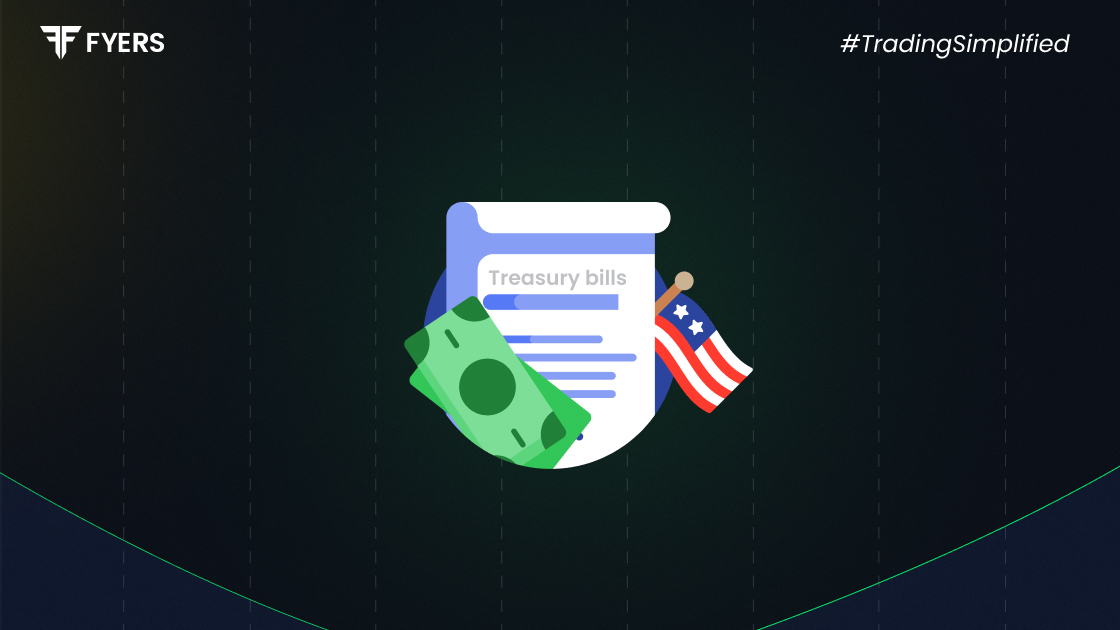

 9 Jul, 2025
9 Jul, 2025
 5 mins read
5 mins read

When it comes to safe, short-term investment options, Treasury Bills (T-Bills) are one of the most secure instruments available in India. Issued by the Government of India, T-Bills offer a guaranteed return and are a key part of the money market. If you're looking for a low-risk investment or want to understand how the government raises funds for short-term needs, learning about T-Bills is essential.
This blog explains what treasury bills are, their types, how they work in India, and how you can invest in them.
Treasury Bills, commonly known as T-Bills, are short-term debt instruments issued by the government of India to meet short-term liquidity requirements. These are zero-coupon securities, meaning they do not carry an interest rate. Instead, they are issued at a discount and redeemed at face value on maturity.
If a T-Bill has a face value of ₹100, it might be issued at ₹97. On maturity, the investor receives ₹100. The ₹3 difference is the investor's return.
T-Bills are considered one of the safest investment avenues as they carry sovereign backing from the government of India.
T-Bills are auctioned by the Reserve Bank of India (RBI) on behalf of the central government. Investors bid for T-Bills in weekly auctions conducted on the RBI’s e-Kuber platform.
Here's how they work:
Issued at a Discount: Investors pay less than the face value.
No Interest: There is no periodic interest payout.
Redeemed at Par: On maturity, the face value is paid to the investor.
Returns: The difference between the purchase price and the face value is the effective yield.
They are mostly used by banks, financial institutions, and corporations for short-term parking of funds.
In India, T-Bills come with three standard maturities:
91-Day T-Bills: Most popular and frequently issued.
182-Day T-Bills: Medium-term option for short-term investors.
364-Day T-Bills: Longer short-term instrument with slightly higher returns.
These are issued in multiples of ₹25,000, and investors can bid in both competitive and non-competitive categories depending on their profile.
Here are the key features of T-Bills:
Zero-coupon: No interest payments during tenure.
Short maturity: Maximum of one year.
High safety: Backed by the Government of India.
Liquidity: Actively traded in the secondary market.
Discounted issuance: Sold below face value.
No TDS: Tax Deducted at Source is not applicable, but gains are taxable.
These features make T-Bills ideal for conservative investors and institutions managing short-term liquidity.
T-Bills are issued by the central government of India through the RBI. These are part of the government’s borrowing programme to manage temporary cash flow mismatches.
They are used by:
Commercial banks to maintain their Statutory Liquidity Ratio (SLR)
Insurance companies and mutual funds
Corporations and high-net-worth individuals for secure short-term returns
Retail investors can now easily buy T-Bills through multiple platforms:
RBI Retail Direct Portal: Launched in 2021, this allows individuals to invest in government securities without intermediaries.
Stock Exchanges (NSE/BSE): Through the non-competitive bidding route.
Mutual Funds: Via liquid or money market funds that invest in T-Bills.
Bank and Broker Platforms: Many SEBI-registered brokers offer access to T-Bills via demat accounts.
The minimum investment amount is ₹10,000 in most cases (depending on the platform), and multiples thereof.
Let’s say you purchase a 91-day T-Bill with:
Face Value: ₹100
Issue Price: ₹98.50
After 91 days, the government pays you ₹100, giving you a gain of ₹1.50. The return, or yield, can be calculated as:
|
Yield = [(Face Value – Issue Price) ÷ Issue Price] × (365 ÷ Tenure) × 100 Yield = [(100 – 98.5) ÷ 98.5] × (365 ÷ 91) × 100 ≈ 6.15% annually |
This method helps you understand the return potential on T-Bills even though they do not pay regular interest.
While T-Bills are very safe, they do have some limitations:
Lower returns: Compared to equity or even long-term bonds.
Taxable gains: Returns are considered short-term capital gains and taxed accordingly.
Not ideal for long-term goals: Due to their short maturity and lower yield.
Limited access for high volumes: Retail investors may find availability restricted in competitive bidding.
Hence, T-Bills are more suited for short-term parking of funds rather than long-term wealth creation.
Treasury bills offer a safe and predictable way to invest short-term surplus funds. Whether you're a cautious investor looking to preserve capital or someone wanting to diversify into fixed-income instruments, T-Bills serve as a useful tool. Backed by the Government of India, they provide a risk-free investment with predictable returns. However, investors must weigh the trade-offs between safety and returns before investing.
T-Bills are short-term debt instruments issued by the government of India, typically maturing in 91, 182, or 364 days, and are sold at a discount and redeemed at face value.
T-Bills do not offer interest. Instead, they are bought at a discount and redeemed at full face value, and the difference is the investor's return.
Indian T-Bills are issued with three standard maturities: 91 days, 182 days, and 364 days.
Yes, T-Bills are among the safest investment options as they are backed by the sovereign guarantee of the government of India.
Calculate your Net P&L after deducting all the charges like Tax, Brokerage, etc.
Find your required margin.
Calculate the average price you paid for a stock and determine your total cost.
Estimate your investment growth. Calculate potential returns on one-time investments.
Forecast your investment returns. Understand potential growth with regular contributions.